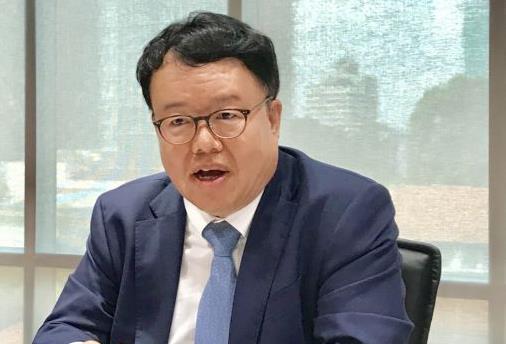Eunyoung Jung, CEO of HSBC South Korea, speaks to Viet Nam News reporter Bo Xuan Hiep about the favourable investment climate in Viet Nam and South Koreas plan to pour more money into the country.

Eunyoung Jung, CEO of HSBC South Korea, speaks to Viet Nam News reporter Bo Xuan Hiep about the favourable investment climate in Viet Nam and South Koreas plan to pour more money into the country.
What do you think about the investment climate here?
Viet Nam is a vibrant country with a thriving economy and one of the most attractive investment destinations in the world for Korean investors. Investors from South Korea no longer see Viet Nam as their manufacturing base, but instead as one of their markets with the most potential.
Among new emerging markets, Viet Nams economy is known for political stability, a skilled labour force, competitive wages and good policies, as well as strong economic growth.
Viet Nam also has the benefit of having a ready supply chain in the country in some industries such as electricity, and textiles and garments. Foreign investors want to invest in Viet Nam to take advantage of the existing supply chains.
Which sectors are the most attractive to Korean investors?
The Korean investment wave is expected to continue in Viet Nam, while investments types and areas would be more diverse in the coming time.
Korean businesses either invest directly or acquire stakes of local firms. Manufacturing, especially in garments and fabrics, takes up most of the investment, but there are increasing investments from South Korea in other sectors such as retail, finance, real estate, infrastructure and IT, as you can see from the expansion of Samsung and LG.
In addition, electricity is one of the most important investments of Korean businesses into Viet Nam. They are also interested in building infrastructure such as ports, airports and expressways in the country.
Korean companies are looking to invest in financial services, food production and logistics as well. The energy sector is another potential area for Korean investment as Viet Nam is now focusing on renewable energy.
As the country is growing, Viet Nam needs more power and energy. Coal and nuclear power could be short-term solutions, but air quality might be impacted.
If Viet Nam pursues more sustainable growth, renewable energy is an area that will attract foreign investment.
Korean investors are also keen to invest in building smart cities in Viet Nam. With the success of South Korea in building big cities, I think South Korea can play an important role in helping Viet Nam develop smart cities.
How have US-China trade tensions affected Korean businesses investing in Viet Nam?
China is the biggest trade partner for both Viet Nam and South Korea. Recently, there has been an increase in costs in China in terms of property prices and labour wages.
Some Korean companies are moving to new emerging markets. And Viet Nam is one of the best destinations.
Korean companies once saw Viet Nam as their manufacturing base but now they consider it to have high potential for growth. However, China is still the manufacturing hub for the world, and we cannot ignore this fact.
Viet Nam is located near China. Businesses that have set up business in China can take advantage of supply chains when they establish manufacturing in Viet Nam because they can still get materials and spare parts from China.
Even before the China-US trade tensions, a lot of foreign investors were already looking to shift their businesses from China to Viet Nam because of rising labour costs in China.
How does the Korean governments New South Policy affect capital flow into Viet Nam?
In line with the Korean governments New South Policy, more Korean companies and their supply chains are moving to Southeast Asia, and Viet Nam is the most important market.
Europe and the US have become mature markets and Koreas growth has been only 2.2-2.3 per cent.
The new policy calls for Korean businesses to diversify its markets to achieve higher growth. This is where ASEAN, including Viet Nam, stands out due to its high growth.
The Korean PM has paid several visits to Viet Nam and has encouraged businesses to go overseas and capture opportunities in Viet Nam.
Recently, LG announced its plan to move its mobile phone production line to the country.
According to research conducted by a government-affiliated research centre, after the governments announcement of the New South Policy, South Koreas investment in ASEAN countries last year went up by 16.7 per cent over 2017.
Viet Nam accounted for 51.5 per cent of the total investment in ASEAN, followed by Singapore with 25.6 per cent.
Last year, South Koreas investment in Viet Nam recorded significant growth of 60.3 per cent over 2017, with the total amount reaching $3.16 billion. — VNS





